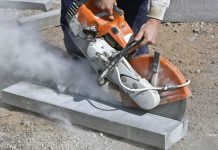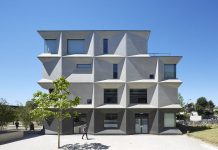Creating opportunities for affordable work and business space is achievable if done through sensitive urban renewal and place-making, as highlighted here by David Edwards, Director at Place-Make
Any young business, SME or creative industry that has looked for affordable work and meeting space in a central location is likely to have experienced a similar situation – that suitable opportunities are limited. While smartphones and Wi-Fi have presented remote access and shared workspaces as viable alternatives to the traditional office, a recent poll titled ‘What Workers Want’ by the British Council for Offices (BCO) and Savills highlighted three significant aspects for worker satisfaction and commercial success:
1. Up to 60% of workers would prefer to have a designated desk;
2. The city/town centre is still the most popular place to work;
3. A physical forum is essential for developing ideas and business.
However, with centrally located commercial space at a premium, SMEs and creative industries are moving further afield in their search for affordable work and business space – essentially, in order to achieve one or more of the above-noted aspects, it is likely that another will be sacrificed. If left unchecked, this trend will lead to a creative and entrepreneurial void in the heart of towns and cities with significant consequences on the physical, social and economic make-up of urban areas.
To foster sustainable communities, how can we deliver affordable work and business accommodation for SMEs in central locations where space is already limited? One possible solution lies in the sensitive renewal of pocket sites and ‘leftover’ space that is often found behind high-value commercial streets and around shopping precincts.
On the face of it, our nearest high street – Muswell Hill Broadway in North London – is a bustling thoroughfare. The retail and commercial hub for a vibrant community of local producers, artists, jewellers, dressmakers, carpenters, bakers, potters, independents and designers, it is an example of a sustainable community with a strong sense of identity and place. Unfortunately, through increased rents along the Broadway and a lack of alternative accommodation, the sustainable fabric of the community is beginning to unravel. Independent outlets are being replaced by coffee shop chains and estate agents while new businesses either move to serviced offices elsewhere or find creative solutions in converted home offices, workshops, kitchens and studios.
Running parallel to the high street is a network of lanes and mews that were formerly planned to provide service access but are now largely underutilised and inactive – these narrow, often crooked streets are no longer accessible for larger vehicles and as a result, the shops are generally serviced from the front outside of trading hours.
Similar conditions can be found in towns and cities across the UK. However, through sensitive renewal, an inclusive approach and a little catalyst investment, ‘left over’ spaces may be transformed to create affordable tenures that are close to commercial hubs, footfall and transport connections.
We don’t have to look far for successful examples of this. Perhaps the most expansive example is The Lanes in Brighton, which is now home to 400 independent businesses that include boutique retailers, cafes, artist studios and offices for SMEs. Other examples include Islington Passage parallel to Upper Street in North London, the Ropewalks behind Bold Street in Liverpool and Nottingham’s Lace Market.
While each of these represents the historic core of the town where narrow streets are well suited to smaller scale, retail and commercial activities – the same principles may be applied to more recently planned town centres and shopping streets. For instance, in the example of Muswell Hill, which was planned at the beginning of the 20th Century, a number of opportunities exist for infill development and the regeneration of public buildings while at the same time, maintaining the overarching sense of place and character.
Treated on a site by site basis, such a model may be expanded to release mixed tenure housing and livework units, which would support the development of sustainable, mixed-use neighbourhoods and provide use and activity outside of working hours.
Ultimately, the support of many stakeholders may be needed to revitalise an existing street, mews or quarter. However, with a little investment for surface treatment and street lighting, the combination of a buoyant private sector, collective support and strong leadership should be sufficient to realise the vision.
If viable, such a mechanism could deliver a wealth of affordable work and business space for small businesses, housing and live/work units while at the same time, strengthening existing commercial centres and enhancing the overall quality and character of the built environment. ■
. . . . . . . . . . . . . . . . . . . . . . . . . . . . . . . . . . . . . . . . . . . . . . .
David Edwards RIBA, ARB, MAA
Director
Place-Make Ltd
Tel: +44 (0)208 226 6828
















